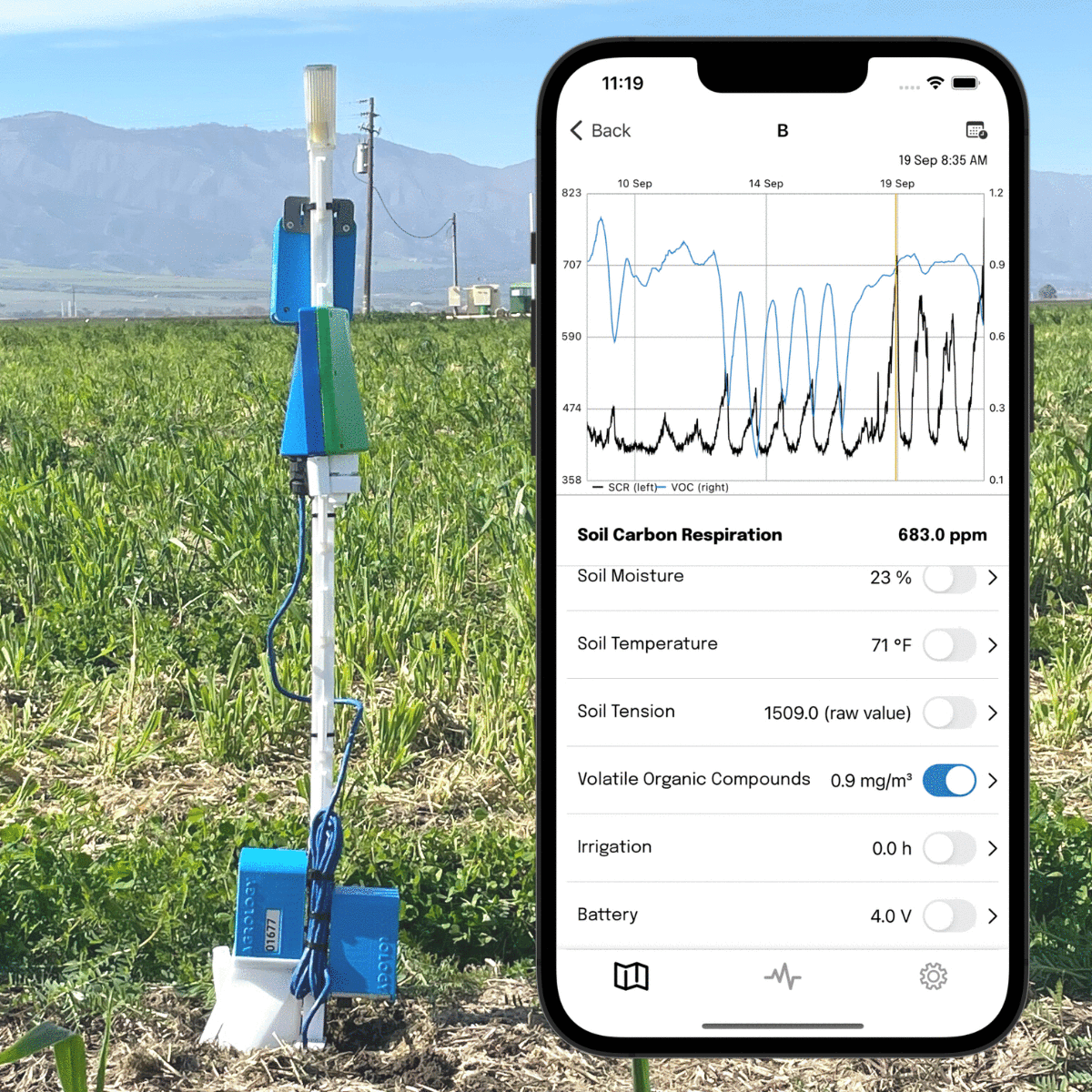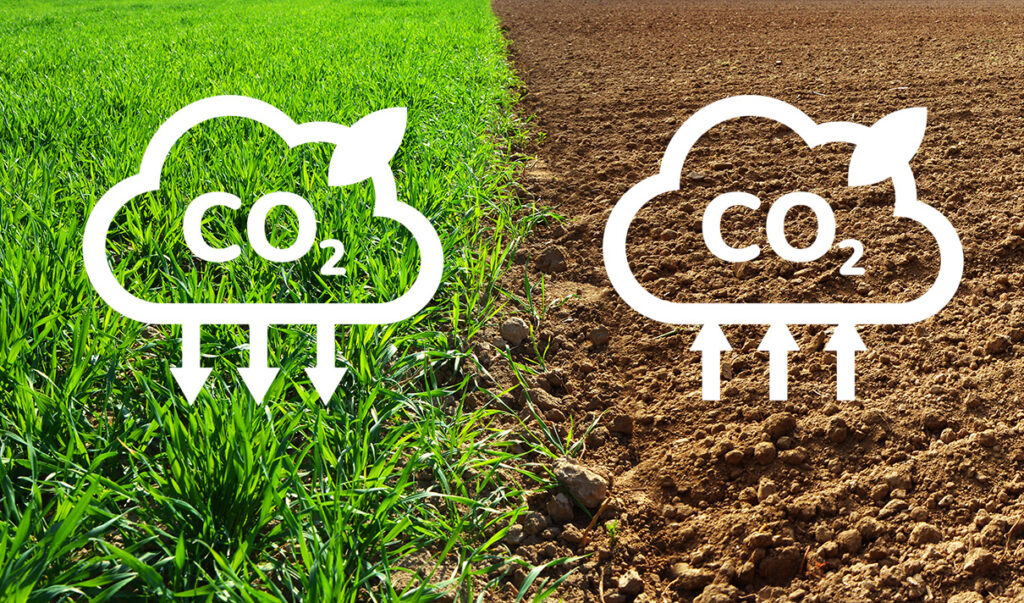US climate tech start-up Agrology has launched its Arbiter Carbon Monitoring System as it helps farmers to combat climate change. Its existing Climate Monitoring System already delivers predictive insights and warnings, up to four days in advance, for wildfire smoke taint risk, extreme weather, soil conditions, pest and disease emergence, and irrigation.
The new Arbiter Carbon Monitoring System tracks soil carbon sequestration in real time, quickly detecting carbon loss via carbon dioxide emission events. The firm says it is the only system that continuously monitors and quantifies soil carbon flux for farmers.
Predictive Agriculture
Arbiter delivers carbon flux data and soil health data to growers on their mobile and desktop devices. Growers receive critical alerts for anomalies and complex challenges like soil carbon flux and soil microbiome health, the pinnacles of regenerative farming.
“The future of climate-smart farming is here,” says Adam Koeppel, Co-Founder and CEO of Agrology. “Sequestering, storing, and keeping carbon in the soil is the best way to rapidly and affordably remove atmospheric carbon. Agrology is helping farmers do just that. For the first time growers can comprehensively monitor carbon projects, own their carbon data, and use this data to offset their carbon footprints or earn money with carbon credits.”
US organic vegetable grower Braga Fresh has been using Arbiter to track and quantify soil carbon in real time since it was installed last July. as part of a regenerative trial program. Leading US wineries Silver Oak and Emeritus Vineyards are also trialing the Arbiter system.
“Agrology’s Arbiter Carbon Monitoring System is the best tool we’ve seen to date to help us evaluate our regenerative trials,” says Eric Moran, Braga Fresh vice president of environmental science and resources.

The Agrology Arbiter Carbon Monitoring System:
- Monitors soil carbon flux, soil carbon changes, soil carbon respiration, soil carbon sequestration, and soil conditions.
- Continuously tracks soil carbon sequestration by evaluating soil carbon flux and then delivers that data to growers in real time.
- Gathers the highest quality carbon data from an entire project geography, enabling growers to know what is happening ecosystem-wide.
- Characterises soil composition changes including soil carbon flux, soil moisture release curves, and soil fertility/salinity. This helps growers understand soil health and carbon content. (As soil carbon increases, soil water and soil nutrient availability improve).
- Alerts growers of significant soil or atmospheric events that impact carbon levels so they can adjust regenerative practices accordingly.
With Arbiter, growers continuously track what’s happening ecosystem-wide. Arbiter devices gather comprehensive data below and above the ground, and track soil conditions and atmospheric gasses. Once data is gathered, Agrology’s machine learning models synthesise data to monitor complex challenges like soil carbon flux and soil microbiome health. Growers own their data and can pull it anytime from their individually encrypted storage using Agrology’s grower portal and data APIs.
Monthly subscription service
The Agrology Arbiter Carbon Monitoring System is now available as a monthly subscription service. Starting at around US$600 per month, Agrology installs and maintains the Arbiter System including all hardware, hardware replacements, software, and the Agrology mobile app. In addition, customers own their data. Growers interested in learning more can visit agrology.ag/arbiter.
What is soil carbon flux?
Soil carbon flux refers to the movement of carbon (C) between the soil and the atmosphere through biological, chemical, and physical processes. It is the net result of the balance between carbon inputs (e.g. plant residues, root exudates) and outputs (e.g. respiration, decomposition) from the soil. Carbon can be stored in the soil for varying lengths of time depending on the type of organic matter and the conditions in the soil. The soil carbon flux can be influenced by a variety of factors, including temperature, moisture, soil type, land use, and management practices, and it has important implications for the global carbon cycle and climate change.



